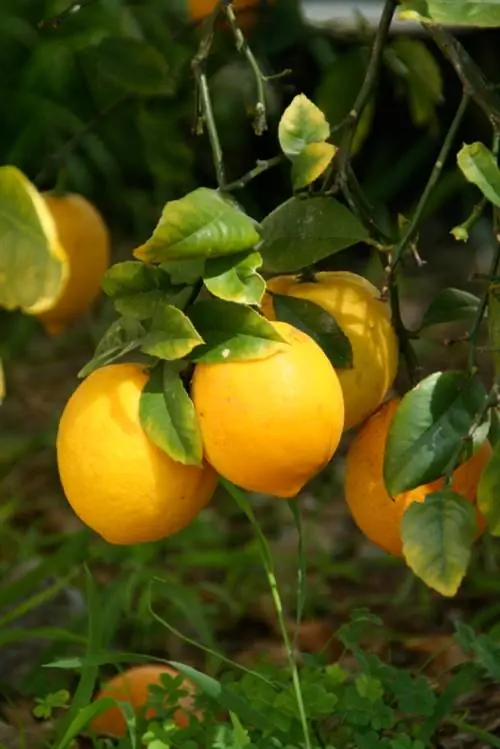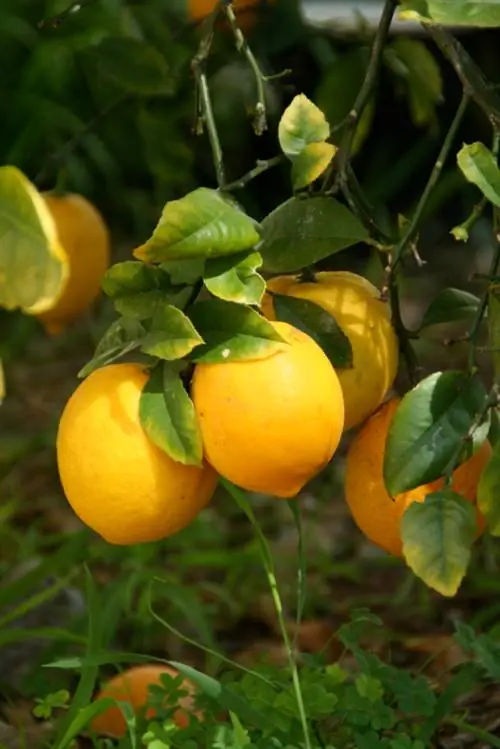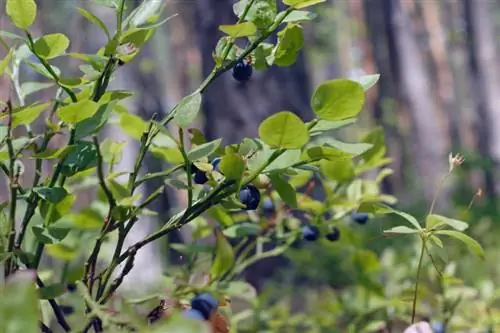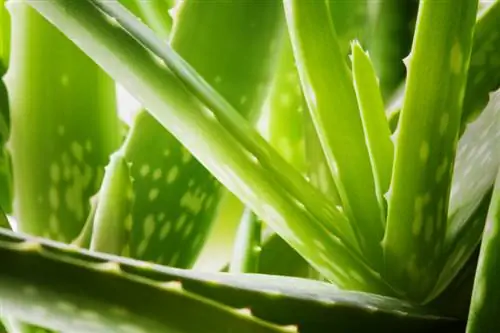- Author admin [email protected].
- Public 2023-12-16 16:46.
- Last modified 2025-01-23 11:20.
Unfortunately, lemon trees are quite susceptible to disease. These are usually due to incorrect care or overwintering, but can also be caused by pest infestation. However, yellow leaves appearing on older shoots are normal. This can be prevented with regular autumn pruning.

What diseases commonly occur in lemon trees?
Common diseases of lemon trees include yellow leaves and pest infestations. Causes can be incorrect care, lack of nutrients, poor wintering or infestation with lice (scale insects, aphids, mealybugs, mealybugs, spider mites). Countermeasures include optimization of care conditions and, if necessary, pest control.
Care errors
If the leaves of the lemon tree turn more and more yellow, it may be due to spider mites. However, if there is no pest infestation, you should assume a nutrient deficiency. There are various reasons for this:
- If roots are kept too moist for a long time, root rot can be the cause, especially with bitter oranges as a base for grafting and with cuttings. Due to the defective roots, nutrients are no longer transported into the crown and the leaves turn yellow.
- If the plant was kept too dry during the growing season, no nutrients can reach the crown because no nutrients can be absorbed from dry soil.
- The plant has not been fertilized or only fertilized insufficiently during the growing season. A sufficient supply of nitrogen is mainly responsible for the lush green leaves.
- Watering with hard water also blocks the absorption of nutrients such as iron - especially with bitter lemon rootstocks. However, intensive iron fertilization is still not recommended, as this often creates rubber flow at the base of the trunk, which can cause the death of the plant. In this case, it is better to switch to lime-free irrigation water immediately.
Damage caused by incorrect wintering
If your lemon tree loses many or even almost all of its leaves, this is usually due to overwintering that was too warm and/or too dark. Another reason may be that the plant was once kept too dry, so that the leaves have already curved upwards on the outer edge. After subsequent abundant watering, all of the leaves are often thrown off. If the drought damage has not been too severe, the lemon tree will usually sprout again.
Pest Infestation
Lemons are very often attacked by scale insects, aphids, mealybugs and mealybugs as well as spider mites. Sticky leaves and shoots always indicate an infestation with plant lice.
Scale insects
The tiny scale insects are difficult to see with the naked eye. They are located on the undersides of leaves along the pathways and on young shoots. The sticky honeydew secretions make the lemon appear to stick, and the liquid also attracts ants. In addition, the sooty mold fungus likes to settle on the honeydew, which turns the leaves black.
Aphids
An aphid infestation can be recognized from afar by the stunted shoots and twisted leaves. The animals prefer to stay on soft new shoots.
mealybugs and mealybugs
The white to pink mealybugs and mealybugs are also usually found on the undersides of leaves, in leaf axils and in the shoot tips. They are about twice as big as scale insects and are therefore easier to spot.
Spider mites
Like plant lice, spider mites are also plant sap-sucking pests. An infestation can be recognized by bright spots on the undersides of the leaves; if the infestation is severe, webs form there and in the leaf axils. Spider mites can usually be kept in check by high humidity.
Tips & Tricks
You can counteract pest infestation by dipping the lemon tree upside down in soapy water and leaving it like that for some time. However, the substrate must not get any soap and the treatment must be repeated several times.






